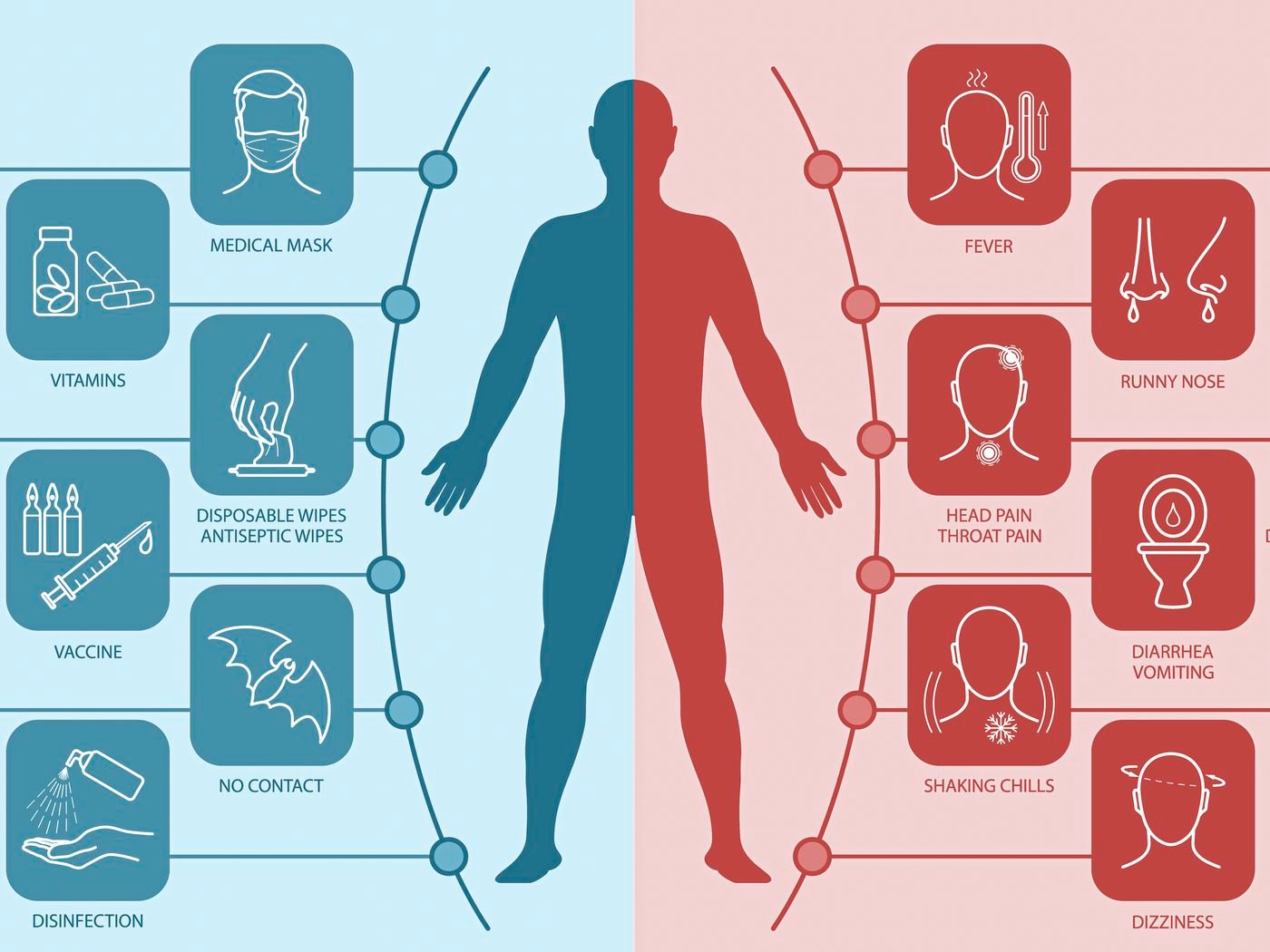Coronavirus cases are rapidly surging the world over and in countries like ours, it is spreading in an even more alarming way. While vaccines may take a minimum of two-three years to fully work, identifying and preventing symptoms is the only real way to stop the infection from taking such a ghastly turn.
While we do know that COVID symptoms differ on a lot of factors- your age, severity, pre-existing conditions, and gender, for that matter, but in most cases, COVID starts off in a certain manner. Researchers have also identified possible symptoms that may be simply exclusive to COVID-19 (loss of smell or taste, hiccups, or infamous COVID toes).
1. One symptom which can diagnose the infection better
Now, newer studies conducted by the University of South California have suggested that COVID symptoms start in a certain order, which can also make it easier to differentiate from flu-like illnesses.
Scientists believe that identification of the symptoms may help people isolate and spot warning signs before the infection risk swells up.
2. The study
Scientists based out of the University of South California sampled data from cases recorded in China. Over 55,000 confirmed COVID-19 cases, collected by the World Health Organisation were analyzed to study the symptom precedence in the cases.
Scientists also used data from over 1100 cases recorded between the early months of the infection peak (December and January). These figures were then compared with data from over 2000 Influenza cases recorded from North America, Europe, and around.
Scientists, in their study, said that identifying the difference in their symptoms could help chart the progression of all illnesses, and also predict the pattern in which COVID-19, which has infected over 27 million people worldwide starts off.
3. Analysis
Fever and not a cough could be the tell-tale sign of COVID-19, scientists who sampled the results believe.
While COVID-19 and flu belong to a related family of viruses and have fairly similar symptoms, analyzed cases showed that most patients with a confirmed COVID diagnosis showcased the presence of fever first, as a comparison to those with the flu, who said the infection started off with a cough.
4. Difference between COVID-19 and the flu
However, the scientists also said that since the influenza strain keeps on changing, flu could also appear with more than one symptom at once.
As per WHO statistics, fever is one of the most widely reported symptoms in COVID-cases worldwide, seen in 87.9 percent cases across 55,924 laboratories (as of June).
Dr. Robert Glatter, a physician commented: “The study found that patients with seasonal flu more commonly developed a cough before the onset of fever. In reality, this may be difficult to discern since the flu often begins abruptly with a triad of symptoms, including back pain, chills, along with a dry cough.”
5. How does COVID-19 differ from the flu then?
COVID-19 might resemble the flu virus in many ways, but the way symptoms show up can be dissimilar. The analysis of cases from China showed that the symptoms presented in the following manner:
- Fever
- Cough, muscle pain
- Nausea, vomiting
- Diarrhea
- Shortness of breath
The study’s findings also suggest that fever, and not cough itself should be used as a preventive screening measure as parts of the world have opened up and resuming life in a new normal manner.
6. How will the findings help?
The one way the symptom tracker would help is to assist doctors in diagnosing patients quicker- especially in heavy load seasons like right now, when flu, COVID-19, viral infections are too common.
Since COVID causing the SARS-COV-2 virus is much more contagious than influenza or any other virus known to circulate around us, being watchful about symptoms like a fever could create awareness as well as help in contact tracing and isolation on the clinical levels, thereby working to stop the spread of the disease.
7. It could prevent a ‘twindemic’
In countries with recurring known flu epidemics, identifying potential symptoms could prevent the chances of a ‘twindemic’ from happening, i.e., flu and COVID-19 from striking at the same time, which could make matters a lot worse and deadlier to battle.
Learning about the symptoms could also contribute to disease prevention from the ground level, where public health facilities or awareness might not be present in abundance.
8. When should you get a test done?
If you suspect your fever is a sign of coronavirus infection, the first thing you should do is reach out to a medical advisor and take necessary precautions while doing so.
Remember, our normal body temperature varies between 97-99 degrees Fahrenheit and depending on the time and the type of temperature scanner you use, you can get different results.
If your symptoms do not subside for over 3 days and your body temperature is constantly over 99 degrees Fahrenheit, consider taking a COVID test. Immediately start self-isolating and adopting necessary quarantine measures. At the same time, keep a tab on other symptoms as well.
9. But are these the only symptoms?
Fever and cough are not the only symptoms to keep a track of. As we learn more about the dangers of the virus, newer symptoms are coming to light.
We should be aware that the spread of asymptomatic transmission (i.e., being COVID-19 positive without having symptoms) exists as well. Hence, precautions are necessary.
Apart from this, there have been documented cases of patients being diagnosed with the infection, only showing symptoms of chest pain, loss of smell, or gastrointestinal infections. Hence, awareness and practicing safe measures are all the more important.










